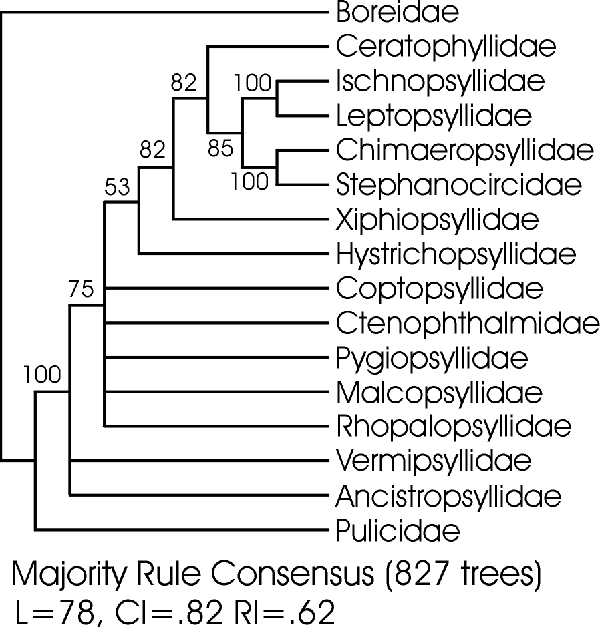Morphological Data
In the past 30 years, there have been over 3000 publications dealing with some aspect of fleas (Lewis and Lewis, 1985), but only one instance of a cladistic analysis (Linardi and Guimaraes, 1993). The major obstacle in flea phylogenetics has been their extreme morphological specializations associated with ectoparasitism, and the inability to adequately homologize morphological characters across taxa. The majority of characters used for species diagnoses are based on the shape and structure of their extraordinarily complex genitalia, and the presence and distribution of setae and spines (Traub and Starcke, 1980; Dunnet and Mardon, 1991).
We have developed a preliminary morphological matrix which includes primarily head and thoracic characters. We consider this to be very preliminary, and will continue to evaluate characters for phylogenetic utility. Thus far, we have minimized the inclusion of genitalic characters since these will require more careful evaluation. Of the 20 morphological characters, 15 are polymorphic in at least one family (though most would not be polymorphic if scored at the generic level).
Parsimony analysis generated 827 trees, the consensus of which is mostly unresolved. The basal placement of Pulicidae and Ischnopsyllidae + Leptopsyllidae is congruent with ideas from classification.
Phylogeny of the Siphonaptera based on Smit

Preliminary phylogeny for the Siphonaptera based on the characters and matrix given below.

Character Matrix
